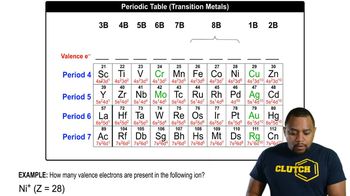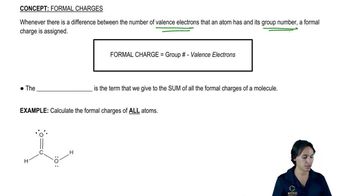Draw a Lewis Structure for each species.
e. CH3CHO
f. CH3S(O)CH3
g. H2SO4
h. CH3NCO
 Verified step by step guidance
Verified step by step guidance Verified video answer for a similar problem:
Verified video answer for a similar problem:



 6:06m
6:06mMaster How to interpret condensed structures. with a bite sized video explanation from Johnny
Start learning